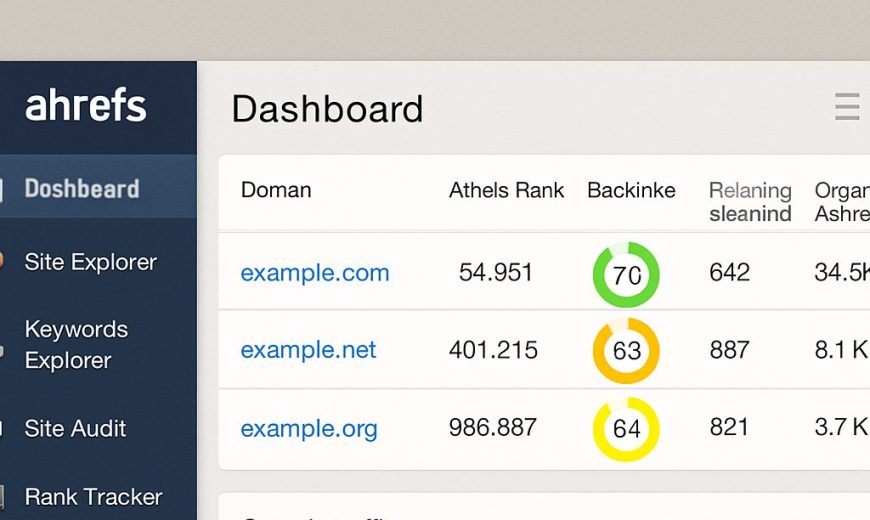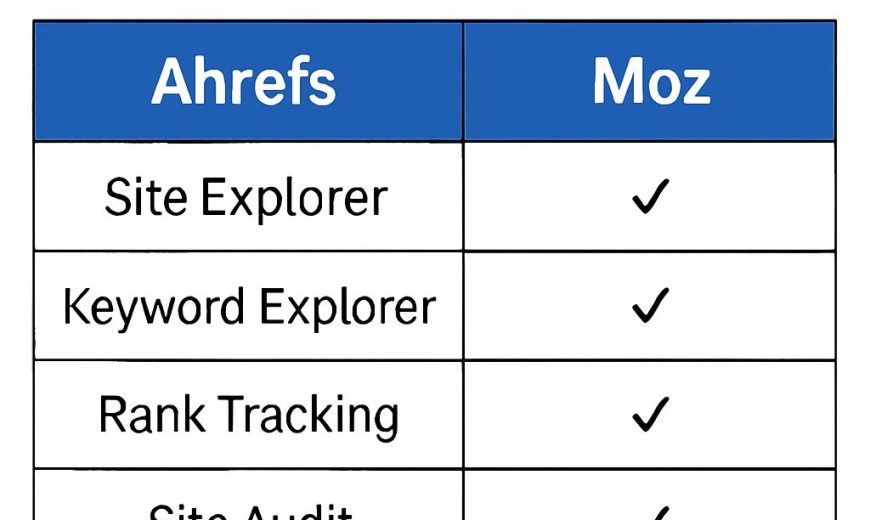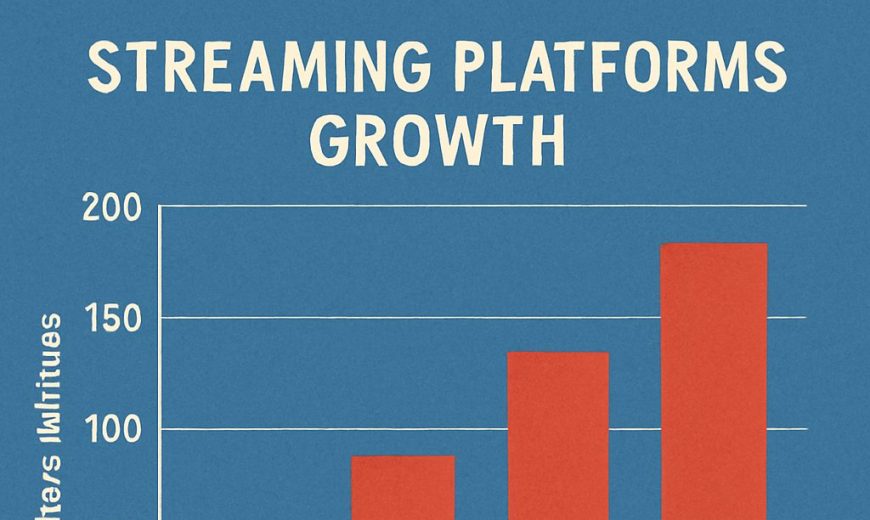Google Analytics is a powerful tool for tracking website performance. It offers insights into user behavior and engagement. One of its key features is keyword tracking. This allows you to see which search terms drive traffic to your site. Understanding keyword performance metrics is crucial for optimizing SEO strategies. It helps identify which keywords lead to conversions. Google Analytics keyword conversion tracking can reveal high-performing keywords. These are the ones that result in sales or desired actions. Keyword data analysis can uncover trends in user behavior. This information is vital for making informed decisions. By leveraging Google Analytics, you can enhance your SEO efforts. It provides a comprehensive view of keyword effectiveness. This guide will explore how to maximize insights using Google Analytics keywords. Understanding Keyword Tracking in Google Analytics Keyword tracking in Google Analytics is a crucial aspect for SEO success. It allows you to see which keywords drive the most traffic. By understanding keyword performance metrics, you can adjust your SEO strategies. This leads to improved rankings and visibility. Google Analytics provides tools to see keywords’ impact on traffic. It also helps track conversions resulting from those keywords. With keyword tracking, you gain insights into user search behaviors. This is essential for optimizing content to match audience needs. Key benefits of keyword tracking in Google Analytics include: by Mario Verduzco (https://unsplash.com/@mario) You can see where keywords perform well. This helps tailor content strategies for better engagement. Use these insights to focus on keywords that truly drive results. Analyze and refine your approach using data-driven tactics. Setting Up Keyword Tracking: Google Analytics and Search Console Integration For effective keyword tracking, integrating Google Analytics with Search Console is vital. This integration enhances the ability to access valuable keyword data. Linking these tools provides a more comprehensive view of your site’s search performance. You’ll see which queries bring users to your site. Google Analytics combined with Search Console allows you to analyze impressions, clicks, and keyword rankings. This information helps refine SEO strategies. To set up this integration, a few straightforward steps are required. These steps ensure seamless data flow between the platforms. A successful setup involves: by Olivie Zemanova (https://unsplash.com/@asuki_photo) by Mihai Moisa (https://unsplash.com/@moisamihai092) By following these steps, keyword insights become accessible. This integration is a cornerstone for data-driven SEO optimization. The combined power of Google Analytics and Search Console helps in spotting opportunities. It empowers more informed decisions to enhance web visibility. Step-by-Step: Linking Google Analytics with Search Console Linking Google Analytics with Search Console starts from the admin panel. Navigate to Property Settings, then access Search Console settings. Select the desired web property to link. Click “Add” next to the URL you wish to associate, then save. Once saved, return to your Google Analytics dashboard. You’ll notice a new set of reports filled with search query data....
In today’s digital landscape, video marketing has become an essential tool for businesses looking to boost engagement and drive sales. With the rise of social media platforms and the increasing consumption of video content, businesses can no longer afford to overlook the power of video marketing. In this article, we will explore how to create an effective video marketing plan, understand the importance of video marketing, and learn strategies to maximize engagement through video content. Video marketing is a powerful way to connect with your audience and communicate your brand message effectively. It combines visual and auditory elements to create a more engaging experience than text or images alone. Here are some reasons why video marketing is important: Increased Engagement Videos capture attention quickly and are more likely to be shared than other forms of content. The dynamic nature of videos can draw viewers in, keeping them engaged longer than static content. They provide a multi-sensory experience that can trigger emotions and prompt viewers to take action. Sharing is a natural extension of engagement, and videos have a viral potential that can significantly amplify your message. Improved SEO Video content can improve your website’s search engine ranking and increase visibility. Search engines prioritize content that keeps users engaged, and videos often have higher engagement metrics. Embedding videos on your website can reduce bounce rates and increase the time users spend on your site. Additionally, properly optimized videos can rank in video search results, providing another avenue for visibility. Higher Conversion Rates Videos can lead to higher conversion rates by providing a clear and persuasive message. By showcasing products in action or explaining complex concepts visually, videos can simplify the decision-making process for potential customers. They can serve as a virtual salesperson, addressing potential objections and guiding viewers through the buyer’s journey. The inclusion of a strong call-to-action can further drive conversions. Better Retention Viewers tend to retain information better when presented in video format. The combination of visual and auditory cues helps reinforce the message, making it more memorable. Videos can break down complex information into digestible segments, aiding comprehension and recall. This enhanced retention means viewers are more likely to remember your brand and message, leading to increased brand awareness over time. Creating a Video Marketing Plan To succeed in video marketing, you need a well-thought-out plan. Here’s how to create one: Setting Goals for Video Marketing Start by defining what you want to achieve with your video marketing efforts. Are you looking to increase brand awareness, generate leads, or boost sales? Setting clear objectives will guide your video content strategy and help you measure success. Consider aligning your goals with broader business objectives to ensure your video marketing efforts contribute to overall growth. Establishing measurable KPIs will enable you to track progress and make data-driven adjustments. Identifying Your Target Audience Understanding your target audience is crucial for creating content that resonates with them. Consider their demographics, interests, and pain points. This information will help you tailor your videos to meet their needs and preferences. Conduct audience research to gather insights into their content consumption habits and preferred platforms. Creating audience personas can provide a detailed picture of who you’re targeting, guiding both content creation and distribution strategies. Choosing the Right Platforms Not all video platforms are created equal, and choosing the right one can make a big difference in your campaign’s success. Consider where your audience spends their time. Are they on YouTube, Instagram, Facebook, or LinkedIn? Each platform has its strengths and limitations, so choose the ones that align with your goals. Evaluate the format and style of content that performs well on each platform. Test and iterate to find the best platform mix for your brand. Developing a Video Marketing Strategy Once you have set your goals and identified your audience, it’s time to develop a strategy. This includes deciding on the types of videos to create, the tone and style of your content, and how often you’ll post. Define a content calendar to ensure consistent posting and alignment with other marketing activities. Consider integrating video marketing with other channels to create a cohesive brand experience. Leverage analytics to refine your strategy over time and maximize ROI. Types of Video Content There are several types of video content you can create to engage your audience: Product Demos Showcase your products and highlight their features and benefits. Demonstrating real-world applications can help potential customers visualize using your products. Consider including testimonials or case studies to provide additional credibility. Focus on the unique selling points that differentiate your product from competitors. Testimonials Share customer stories and experiences to build trust and credibility. Featuring real customers can humanize your brand and create an emotional connection with your audience. Ensure testimonials are authentic and relatable to resonate with viewers. Consider using a diverse range of testimonials to appeal to different segments of your audience. How-to Videos Provide valuable information and demonstrate how to use your products. How-to videos can position your brand as an industry expert, building trust and authority. Break down complex processes into easy-to-follow steps to enhance understanding. Encourage viewers to share their experiences or tips, fostering community engagement. Behind-the-Scenes...
Emerging Advertising and Marketing Trends to Watch in 2026 As the world of advertising continues to evolve, staying ahead of the curve is crucial for marketers eager to maintain a competitive edge. 2024 promises to bring a host of new trends that will shape the industry, offering innovative ways to engage with audiences. In this article, we will explore the emerging advertising trends to watch in 2024, highlighting the latest digital marketing trends, advertising strategies, and more. Artificial Intelligence (AI) is revolutionizing the marketing industry, offering new ways to analyze data, optimize campaigns, and personalize customer experiences. In 2024, AI will play a pivotal role in automating tasks and providing insights that were previously unattainable. Marketers can expect AI to enhance targeting capabilities, refine content creation, and improve customer interactions. Enhanced Targeting Capabilities AI’s ability to process vast amounts of data allows for unprecedented precision in targeting audiences. By analyzing consumer behavior, purchasing patterns, and even social media activity, AI can help marketers identify and reach niche segments more effectively. This precision targeting ensures that marketing messages resonate with the right audience, increasing the likelihood of engagement and conversion. AI-Driven Content Creation Content creation is a critical component of any advertising strategy, and AI is set to transform this area in 2024. AI tools can generate content ideas, draft copy, and even design visuals, streamlining the content creation process. This not only saves time and resources but also ensures that content remains fresh and relevant, tailored to the preferences of the target audience. Enhanced Customer Interactions AI is also reshaping how brands interact with customers, offering more personalized and efficient communication channels. Chatbots and virtual assistants, powered by AI, can provide instant responses to customer inquiries, improving customer service and satisfaction. Additionally, AI can anticipate customer needs by analyzing past interactions, enabling brands to proactively offer solutions and recommendations. Video Advertising Continues to Thrive Video advertising remains a dominant force in the digital landscape. With platforms like TikTok and Instagram Reels gaining popularity, short-form video content is becoming more influential. In 2024, marketers will need to focus on creating captivating, bite-sized videos that capture attention quickly and deliver messages succinctly. Short-Form Video Dominance Short-form videos, typically under 60 seconds, have exploded in popularity due to their ability to convey messages swiftly and engagingly. Platforms like TikTok and Instagram Reels are at the forefront of this trend, and brands are increasingly leveraging these platforms to reach younger audiences. The challenge for marketers will be to create content that is not only brief but also impactful, capturing the viewer’s interest within the first few seconds. Storytelling Through Video Storytelling remains a powerful tool in advertising, and video is the perfect medium to bring stories to life. In 2024, brands will focus on crafting narratives that resonate emotionally with their audience, using video to convey brand values and missions. Whether through documentaries, behind-the-scenes glimpses, or customer testimonials, storytelling in video form can forge a deeper connection with viewers. Integration of User-Generated Content User-generated content (UGC) is becoming an integral part of video advertising strategies. Encouraging customers to create and share their content related to a brand can enhance authenticity and trust. In 2024, marketers will increasingly use UGC in their video campaigns, showcasing real customer experiences and testimonials to build credibility and foster community engagement. The Growth of Audio Advertising Audio advertising is experiencing a renaissance, driven by the popularity of podcasts and music streaming services. Brands are discovering the power of audio to reach audiences in intimate and engaging ways. In 2024, expect to see more investment in audio advertising as marketers explore its potential. Podcast Advertising Boom Podcasts offer a unique opportunity for brands to engage with niche audiences in a more personal and immersive way. As podcasts continue to grow in popularity, more brands are investing in this medium to reach listeners who are often deeply engaged with the content. In 2024, expect to see more creative and integrated podcast advertising, from host-read endorsements to sponsored episodes. Music Streaming Ads Music streaming platforms like Spotify and Apple Music provide another avenue for audio advertising. Brands can reach consumers during moments of relaxation or activity, creating a more receptive environment for advertising messages. In 2024, marketers will explore dynamic ad placements that align with user playlists and listening habits, ensuring ads feel organic and unobtrusive. Voice Search Optimization With the rise of smart speakers and voice-activated devices, optimizing for voice search is becoming crucial. Brands need to ensure that their content is easily discoverable through voice queries, as more consumers rely on voice search for information and shopping. In 2024, optimizing advertising strategies for voice search will be essential to reaching tech-savvy audiences effectively. Sustainability in Marketing As environmental concerns continue to grow, sustainability is becoming a key focus for brands. Consumers are increasingly demanding that companies demonstrate environmental responsibility. In 2024, marketers will need to integrate sustainability into their strategies to appeal to eco-conscious consumers....
The entertainment industry is in a state of constant flux, propelled by rapid technological advancements and the ever-evolving preferences of consumers. As we look towards 2025 and beyond, it becomes increasingly essential for businesses and creators to grasp these shifts to remain competitive and relevant. This expanded article delves into the emerging trends that are redefining the entertainment landscape, from the ascension of streaming platforms to innovative content creation, audience engagement strategies, and global industry shifts. Over the last decade, there has been a notable shift from traditional television viewing to digital streaming platforms. The likes of Netflix, Amazon Prime, and Disney+ have transformed how audiences access and consume content. The appeal of on-demand viewing, combined with an extensive selection of content, has positioned streaming platforms as a leading force in the entertainment realm. The Evolution of Streaming Services As streaming services continue to dominate, they are diversifying their offerings beyond just movies and television shows. Many platforms are now investing in original content, including documentaries, reality TV, and even live sports. This expansion not only broadens their audience base but also solidifies their position as comprehensive entertainment hubs. The Role of Data Analytics Data analytics play a pivotal role in the success of streaming platforms. By collecting and analyzing user data, these services can offer tailored content recommendations, enhancing the user experience. This personalized approach not only keeps audiences engaged but also fosters customer loyalty, as viewers feel their preferences are understood and catered to. Challenges and Opportunities Despite their success, streaming platforms face challenges such as market saturation and competition for exclusive content rights. However, these challenges also present opportunities for innovation. By exploring new content formats and investing in technology like artificial intelligence and machine learning, platforms can continue to innovate and differentiate themselves in a crowded market. Innovative Content Creation The digital age has democratized content creation, allowing independent creators to reach global audiences like never before. Platforms such as YouTube and TikTok have empowered individuals to produce content outside of traditional media channels, leading to a surge in creativity and innovation. The Rise of Independent Creators Independent creators are thriving in this new landscape, producing content that resonates with niche audiences. They have the freedom to explore unique themes and ideas, often resulting in more diverse and authentic storytelling. This trend is reshaping the entertainment industry by challenging traditional narratives and broadening the spectrum of available content. Collaborative Content Development Collaboration is becoming increasingly common among creators, fostering an environment of shared creativity. By partnering with other creators, individuals can combine their unique talents and perspectives to produce more dynamic and engaging content. This collaborative spirit not only enriches the content itself but also helps creators expand their reach and influence. Emerging Content Formats As consumer preferences evolve, so too do the formats in which content is delivered. From podcasts and web series to interactive and augmented reality experiences, creators are experimenting with new ways to engage their audiences. These emerging formats offer fresh opportunities for storytelling and audience interaction, ensuring the entertainment industry remains vibrant and dynamic. Audience Engagement Strategies In today’s competitive entertainment landscape, engaging audiences is more critical than ever. Companies are adopting innovative strategies to capture and sustain viewer attention, ensuring their content stands out in a crowded market. The Power of Interactivity Interactive content is revolutionizing audience engagement by offering viewers a more immersive experience. Technologies such as virtual reality (VR) and augmented reality (AR) allow audiences to become active participants in the content they consume. This level of interactivity not only enhances engagement but also creates memorable experiences that foster audience loyalty. Building Online Communities Community-building is a vital strategy for maintaining audience engagement. Social media platforms offer creators and companies the chance to interact directly with their audiences, creating a sense of connection and belonging. By fostering these online communities, content creators can cultivate a loyal fan base and generate valuable feedback to inform future projects. Utilizing User-Generated Content User-generated content (UGC) is another powerful tool for audience engagement. By encouraging audiences to create and share their own content related to a particular brand or theme, companies can boost engagement and create a sense of ownership among their audience. UGC not only enhances brand visibility but also provides insights into audience preferences and trends. The Role of Pop Culture by chester wade (https://unsplash.com/@chesterwade) Pop culture remains a significant force in shaping entertainment trends. From fashion and music to film and television, it influences consumer behavior and preferences across various domains. The Impact of Celebrity Endorsements Celebrity endorsements continue to be a powerful marketing tool in the entertainment industry. Celebrities have the ability to sway public opinion and introduce trends, making them valuable partners for brands looking to expand their reach. This impact is amplified by social media, where celebrities can directly engage with millions of followers....









